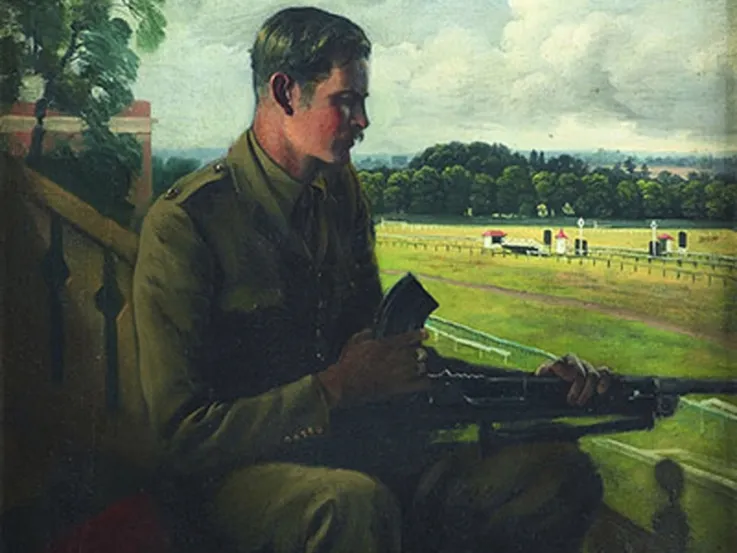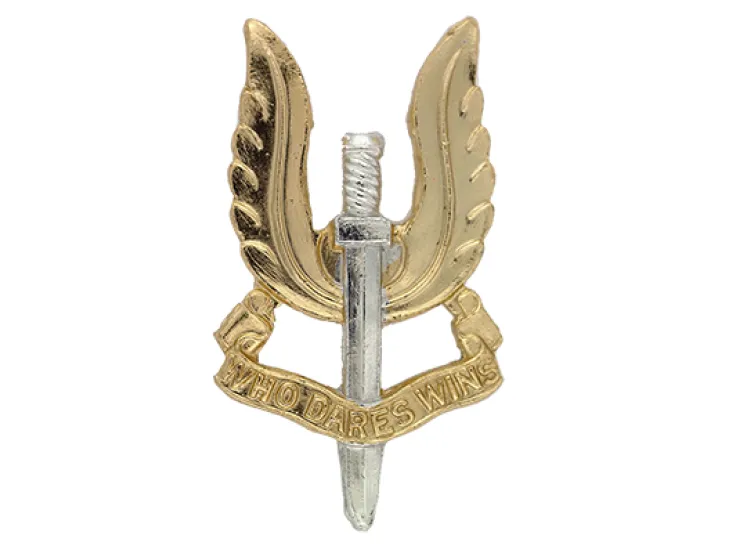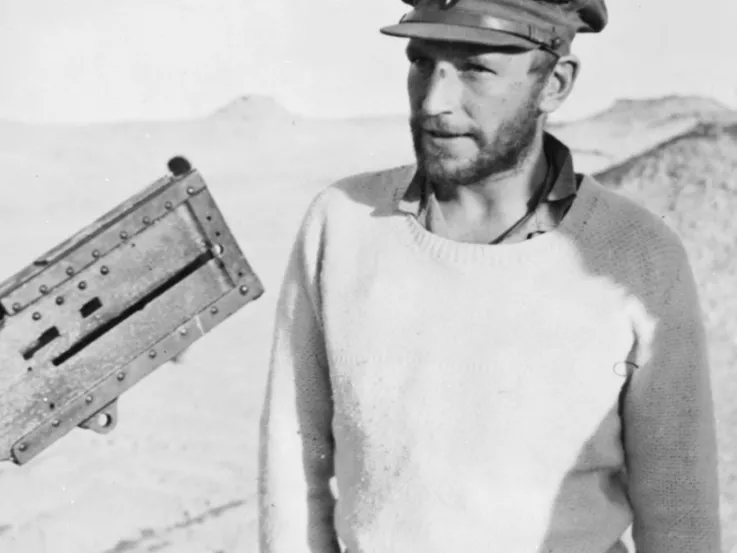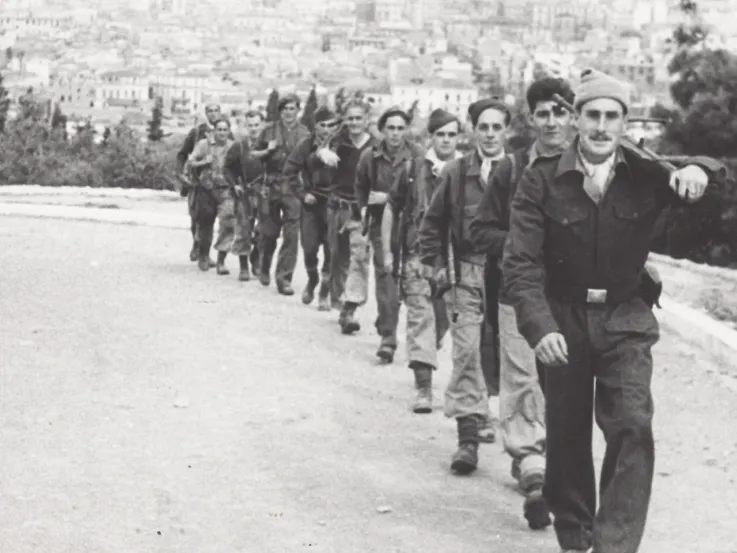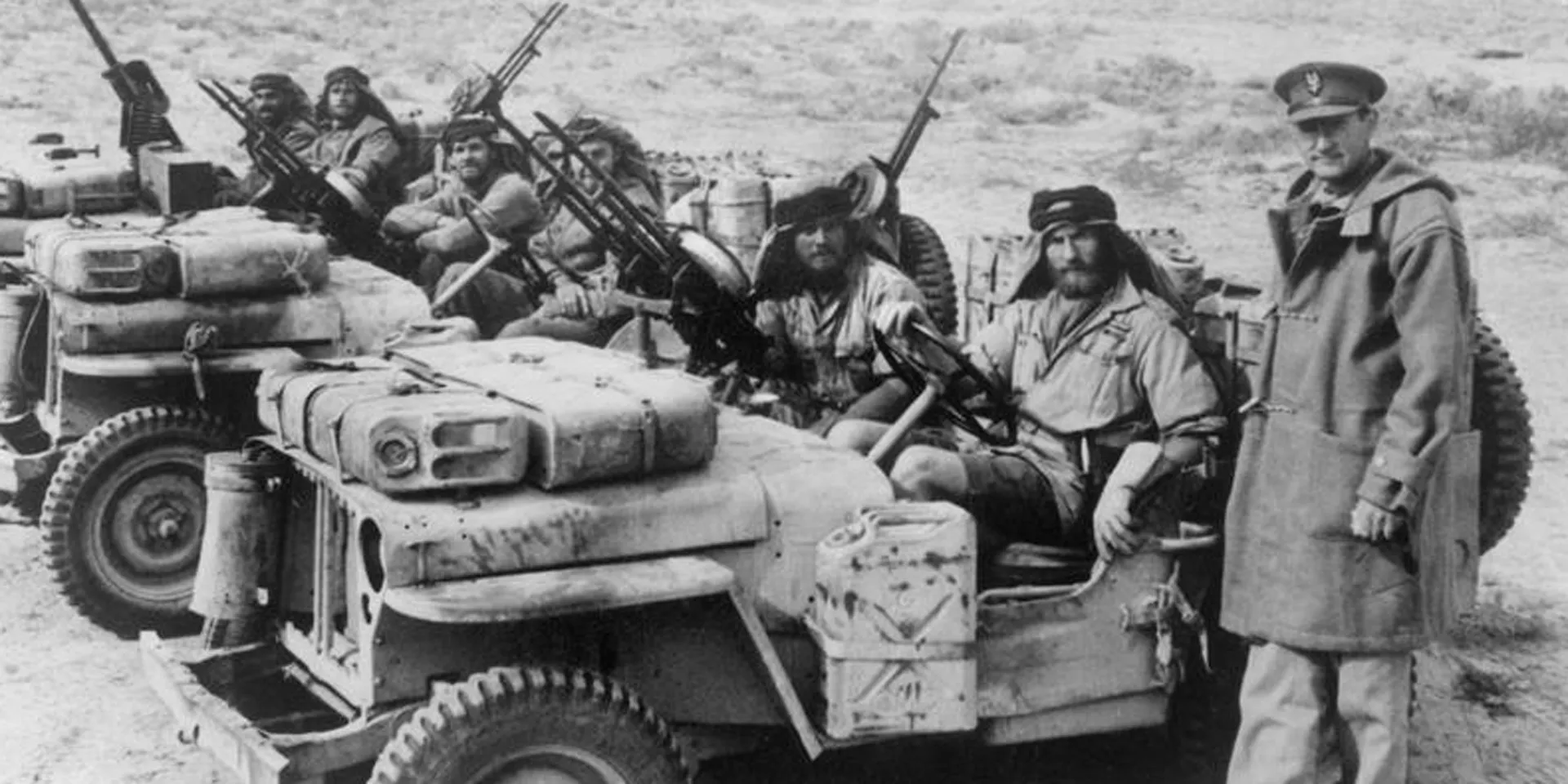
David Stirling (right) greets an SAS patrol on its return from a desert mission, 1942 (© IWM (E 21338))
Early life
Archibald David Stirling (1915-90) was born in Keir House, Perthshire, into an aristocratic Scottish family with a proud military heritage. During his childhood, he enjoyed the freedom of the Scottish Highlands, where he honed his skill as a hunter.
Strikingly tall, Stirling was ungainly but athletically built. His privileged background and education imbued him with great confidence and social grace, which made him a natural leader.
Misspent youth
As a young man in the 1930s, Stirling exhibited both a spirit of adventure and a rebellious waywardness. An inveterate gambler with a fondness for drink and nightlife, he balked at the hard work required for a conventional path in life. As a result, he was unable to see out his studies or establish himself in a profession.
Thrown out of Cambridge University after his first year, he initially tried his hand as an artist and an architect. His intrepid nature then steered him into becoming a mountaineer and a reservist in the Scots Guards, taking on the lofty ambition to become the first man to scale Mount Everest.

Lieutenant-Colonel David Stirling, 1942 (© IWM (E 21340))
Outbreak of war
When the Second World War (1939-45) broke out, Stirling was in America. He had been working there as a cowboy in an interlude to his mountaineering training. He promptly returned to Britain and re-joined the Scots Guards.
Commandos
Despite his military background, Stirling found Army life intensely disagreeable. Keen to get involved in the action and escape the tedium of regimental discipline, he joined the Commandos, Britain’s new raiding and reconnaissance force. In early 1941, he was despatched to the Middle East as part of the Commando group known as Layforce.
However, Stirling’s frustrations continued during his time in the Commandos. Many operations were cancelled and, as a result, his wayward behaviour returned. He was nearly put on a charge of malingering that would have landed him in serious trouble.
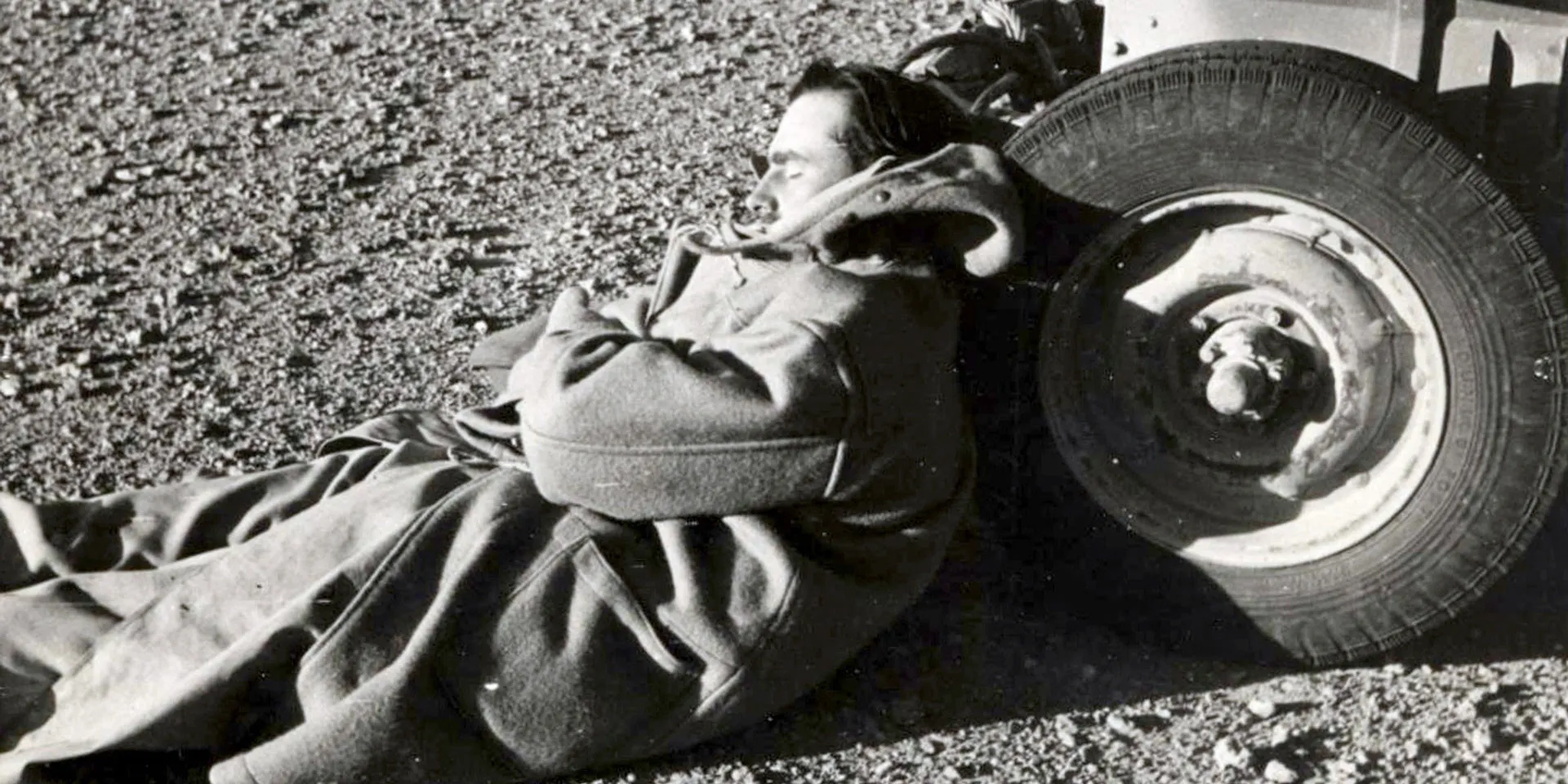
Lieutenant-Colonel David Stirling resting in the desert, 1942 (© Crown)
Parachutes
A conversation with one of his comrades, Lieutenant ‘Jock’ Lewes, about the military potential of parachuting was to provide Stirling with a way out. He joined Lewes on an experimental parachute jump, the first to be made in the Middle East. It went badly wrong for Stirling, who suffered a serious spinal injury, but he remained undeterred.
While convalescing in hospital, Stirling seized the opportunity to work up the ideas he had discussed with Lewes to create a new parachute raiding force. This would operate on small-unit principles, and utilise stealth and guile to undertake acts of sabotage behind enemy lines.
SAS
Stirling used his social connections and charm to get his ideas endorsed by Middle East Headquarters. He then drew in brave and adventure-hungry recruits from the Commandos of the recently defunct Layforce.
His new unit of just 67 officers and men was designated ‘L Detachment Special Air Service Brigade’. The name was part of an intelligence bluff to exaggerate its small numbers.
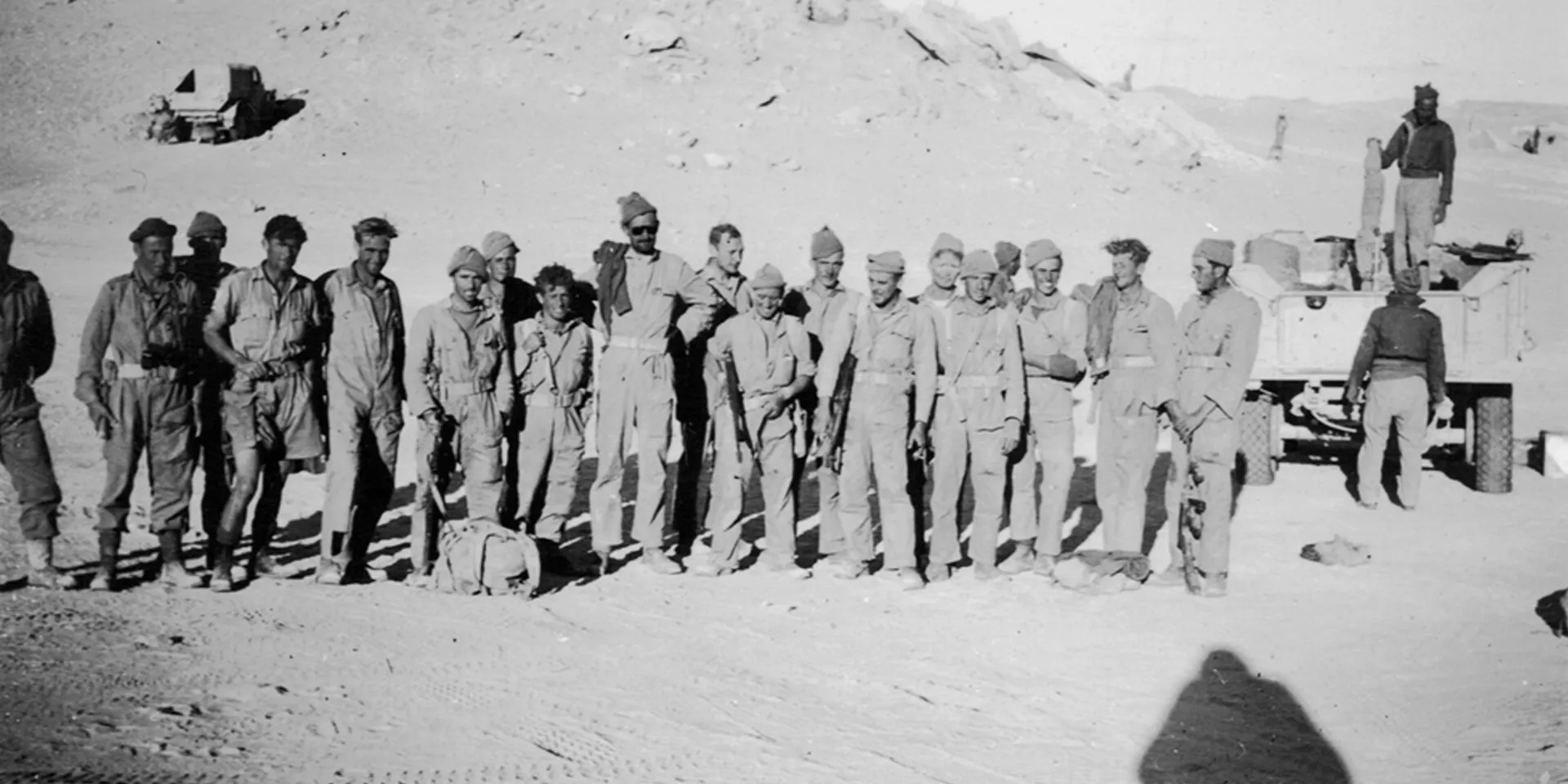
The survivors of SAS Operation Squatter, November 1941 (© The family of the late Lieutenant-Colonel 'Jake' Easonsmith, DSO, MC)
Who Dares Wins
Believing that Lewes’s knowledge and professionalism would be indispensable to the fledgling unit, Stirling worked hard to bring him on board as his deputy. Together, these two very different men formed a formidable partnership.
While Lewes trained the men, Stirling - now with a firm object and ideal to pursue - worked tirelessly to overcome the opposition from the military bureaucracy of Middle East HQ and provide the material and administrative support that the new unit required.
By November 1941, L Detachment SAS was ready for action. Its ethos was encapsulated in its motto, ‘Who Dares Wins’, personally chosen by Stirling.
Disaster in the desert
For its first mission, codenamed Operation Squatter, the SAS was tasked with parachuting behind the lines in Libya to destroy enemy aircraft on the ground in support of a forthcoming British offensive. Launched into a dreadful storm, the mission ended in disaster. Only 21 of the 55 men who took part returned.
The road to success
But Stirling and his surviving men showed enormous resilience. Just one month later, they were ready to attack again.
This time they developed their partnership with another special force, the Long Range Desert Group (LRDG), using their vehicles not only for collection, as they had done previously, but to deliver them to their targets as well. This negated the many hazards of parachuting into the desert.
From here on, the SAS enjoyed great success. Over the next year, they wrought havoc behind enemy lines, destroying hundreds of aircraft in a string of hit-and-run raids. From the summer of 1942, their tactics evolved to include the use of heavily armed jeeps to storm airfields, guns blazing.
In September 1942, the SAS achieved regimental status. Stirling’s daring and unorthodox methods had been brilliantly vindicated.
‘The boy Stirling is quite mad, quite, quite mad. However, in a war there is often a place for mad people.’General Bernard Montgomery — November 1942
The Phantom Major
In January 1943, Stirling was captured during a mission in Tunisia. By this time, he had become a legend in the desert, earning the nickname ‘The Phantom Major’ from his German adversaries. After capture, he undertook many escape attempts, resulting in his eventual transfer to the supposedly escape-proof Colditz Castle in Germany.
Such was Stirling’s importance, there were widespread fears among his men that his capture would mean the end of the unit. But these proved unfounded. The SAS went on to enjoy great success under the command of his comrade, Lieutenant Colonel Robert Blair ‘Paddy’ Mayne, while his brother, Lieutenant Colonel William Stirling, established the 2nd SAS Regiment in Algeria.
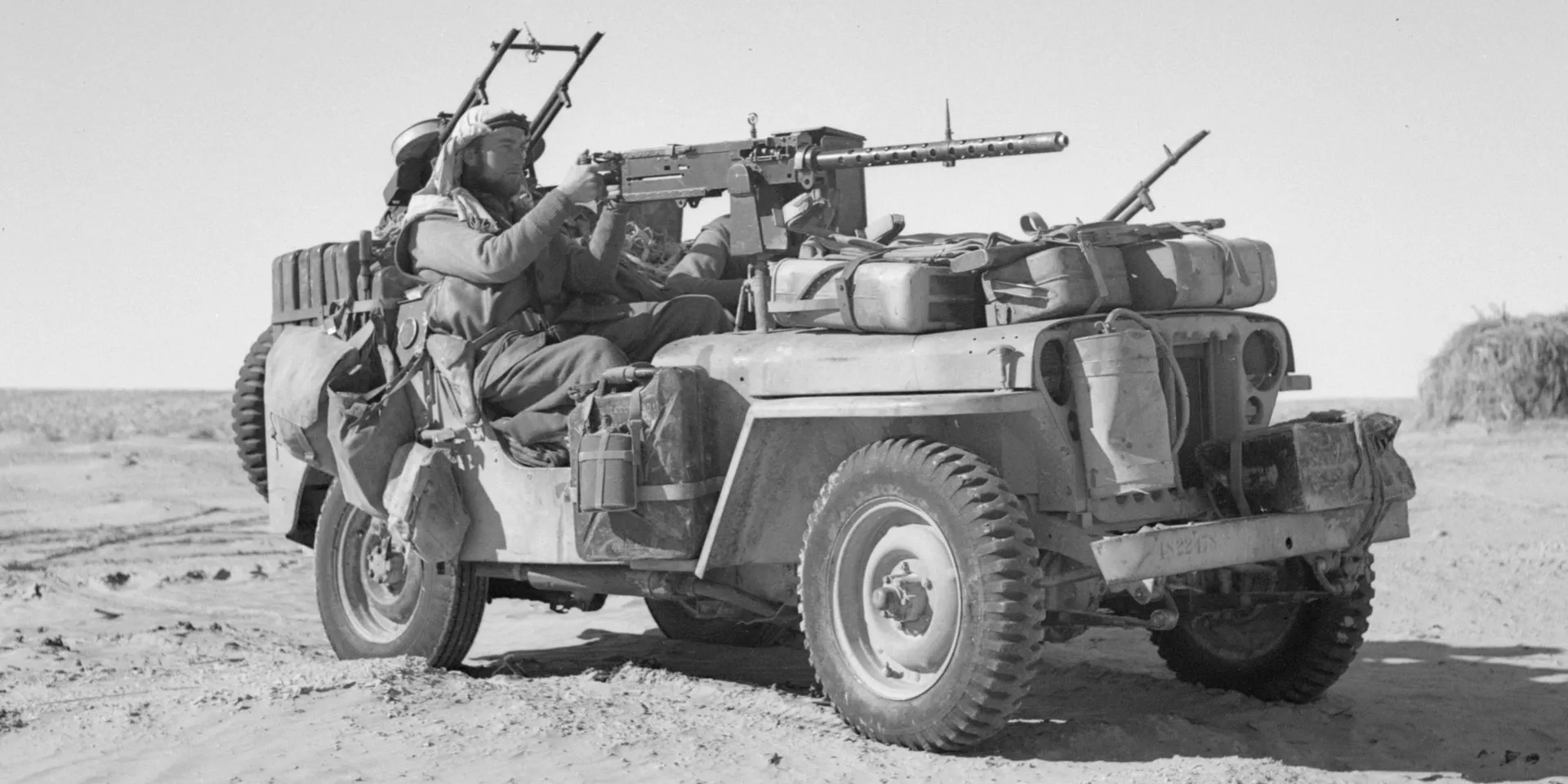
A heavily armed SAS jeep in the desert, c1943 (© Crown)
Later life
Stirling retired with the rank of colonel and, after the war, took on two major enterprises: the Capricorn Society - which aimed to bring greater unity to Africa - and a global network of television stations.
Following the failure of these ambitious schemes, he became involved in the arms and security businesses as well as politics - moves that resulted in much controversy. He was knighted shortly before his death in 1990.


